Effortlessly managing rental security deposits is now simpler with our Sample Security Deposit Return Letter Template. Aimed at smoothing the process for both landlords and tenants, this template is a comprehensive tool for effective communication. Adhering to the intricacies of U.S. rental law, it ensures every transaction is transparent and legally sound. An indispensable resource for anyone involved in property rentals, this letter template simplifies the return of security deposits. It’s perfect for documenting any deductions and provides a clear guideline for all parties involved. Streamline your property management tasks today with this essential template, fostering trust and clarity in all your rental interactions.
1. Sample Security Deposit Return Letter
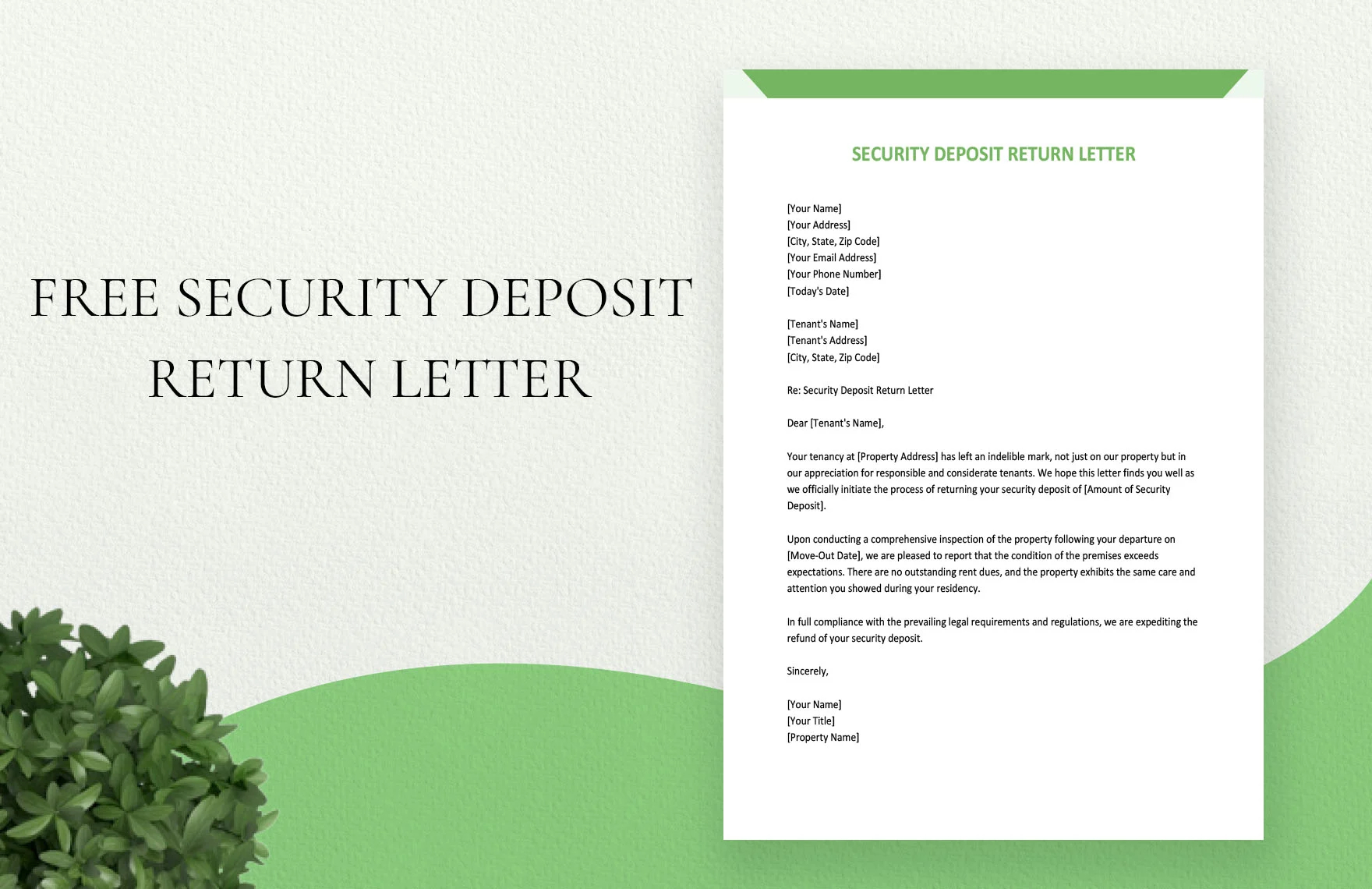
2. Sample Demand Letter for Security Deposit Template
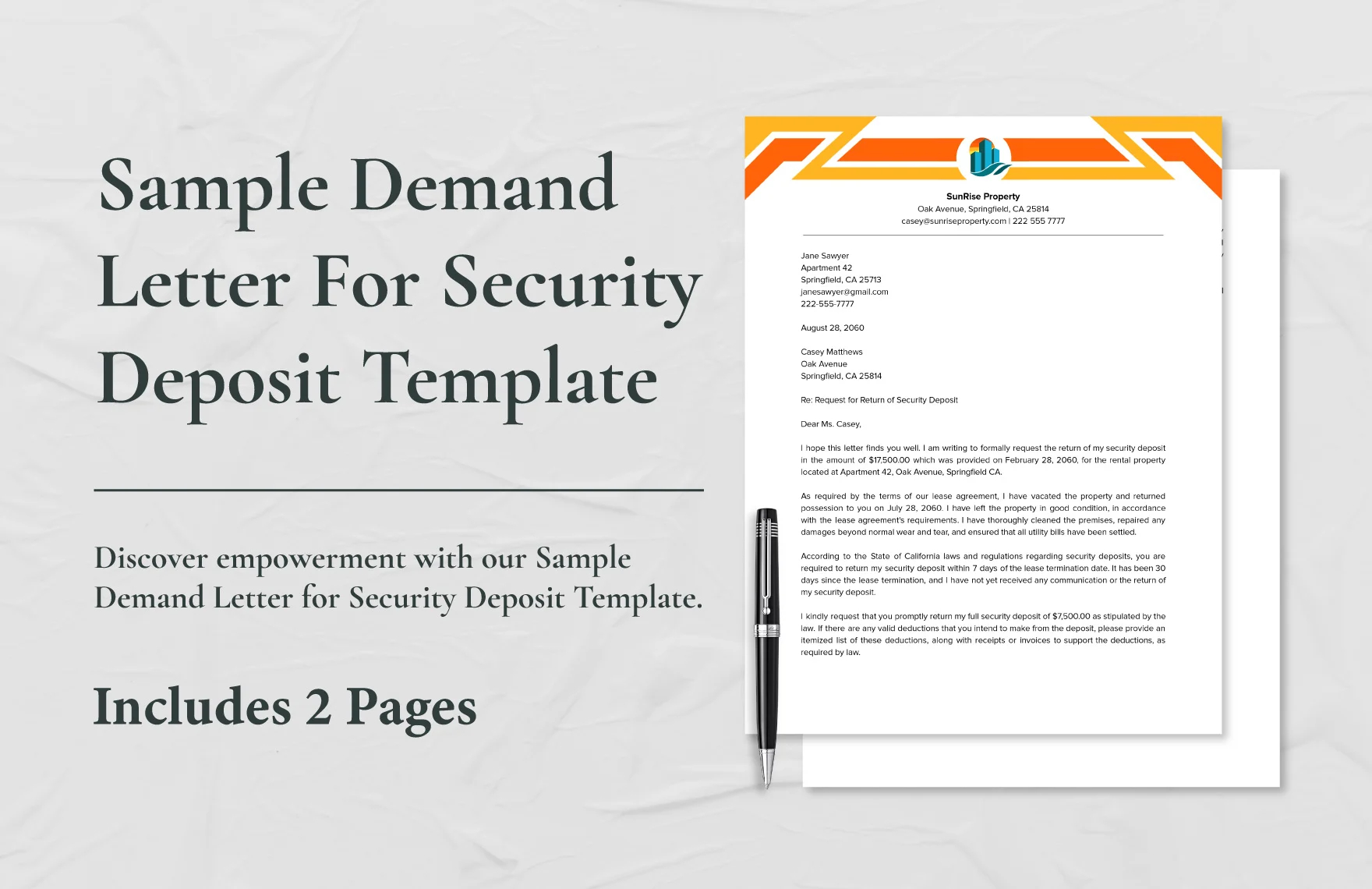
When do you need a security deposit return letter?
A Security Deposit Return Letter is an essential document in the realm of property rentals, serving as a formal communication tool between landlords and tenants. This letter becomes crucial under specific circumstances, which are important to understand for anyone involved in renting property.
End of Tenancy: A Primary Trigger
Primarily, the need for a Security Deposit Return Letter arises at the end of a tenancy agreement. When a tenant moves out, this letter serves as a formal acknowledgment from the landlord regarding the status of the security deposit. It outlines whether the tenant will receive a full refund, a partial refund, or none, depending on the condition of the property.
Documenting Property Condition:
One of the key aspects of this letter is its role in documenting the state of the property at the end of the tenancy. If there are damages beyond normal wear and tear, the landlord can use the letter to detail these damages and the associated costs, which might be deducted from the security deposit. This documentation is crucial for both parties to avoid disputes and ensure a transparent process.
Legal Compliance:
In many U.S. states, returning a security deposit within a specific timeframe is legally mandated. The Security Deposit Return Letter not only facilitates this process but also serves as a record of compliance with state laws. This is vital for landlords to avoid legal repercussions and for tenants to ensure their rights are protected.
Facilitating Clear Communication:
Effective communication is vital in any landlord-tenant relationship. This letter helps in clearly communicating the details about the security deposit, including any deductions made for repairs or unpaid rent. It helps in maintaining a professional and transparent relationship between the two parties.
Evidence in Disputes:
Should there be a disagreement regarding the security deposit, the Security Deposit Return Letter acts as a piece of evidence. It can be used in small claims court or mediation if the tenant disputes the deductions or the failure to return the deposit.
Promoting Professionalism:
Using a formal letter for security deposit returns promotes professionalism in property management. It shows that the landlord is diligent and respects the legal and personal aspects of the landlord-tenant relationship.
Peace of Mind:
Finally, for tenants, receiving this letter provides peace of mind. It signals the conclusion of their obligations regarding the rental property and clarifies the financial aspects of their security deposit.
In conclusion, a Security Deposit Return Letter is a critical document in the rental process. It ensures legal compliance, facilitates clear communication, serves as documentation, aids in dispute resolution, and upholds professionalism in the property rental industry. Both landlords and tenants benefit significantly from the clarity and structure it provides in the handling of security deposits.
3. Sample Notice for Return of Security Deposit Letter
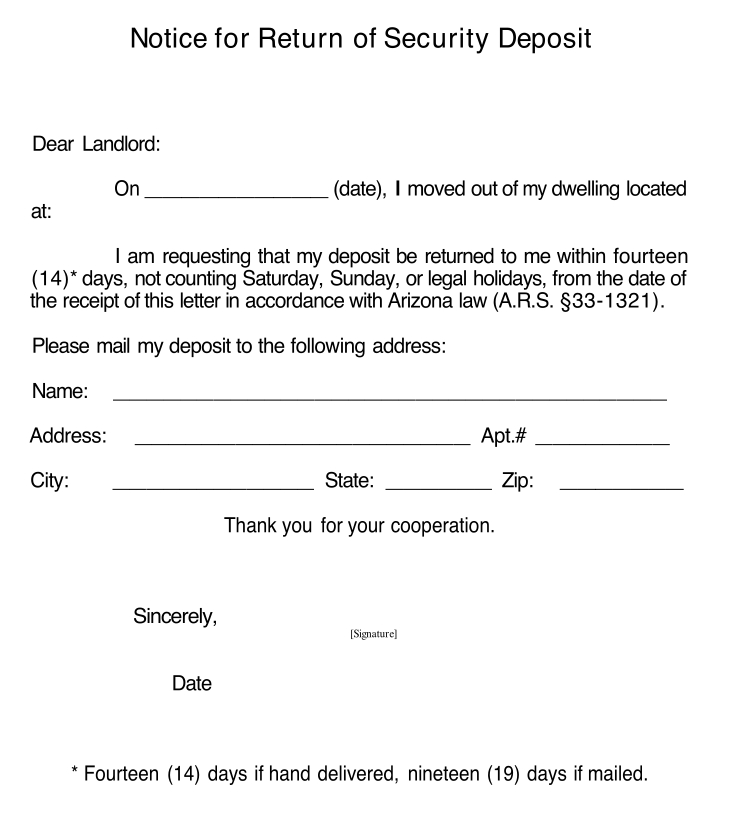
4. Sample Security Deposit Deduction Letter
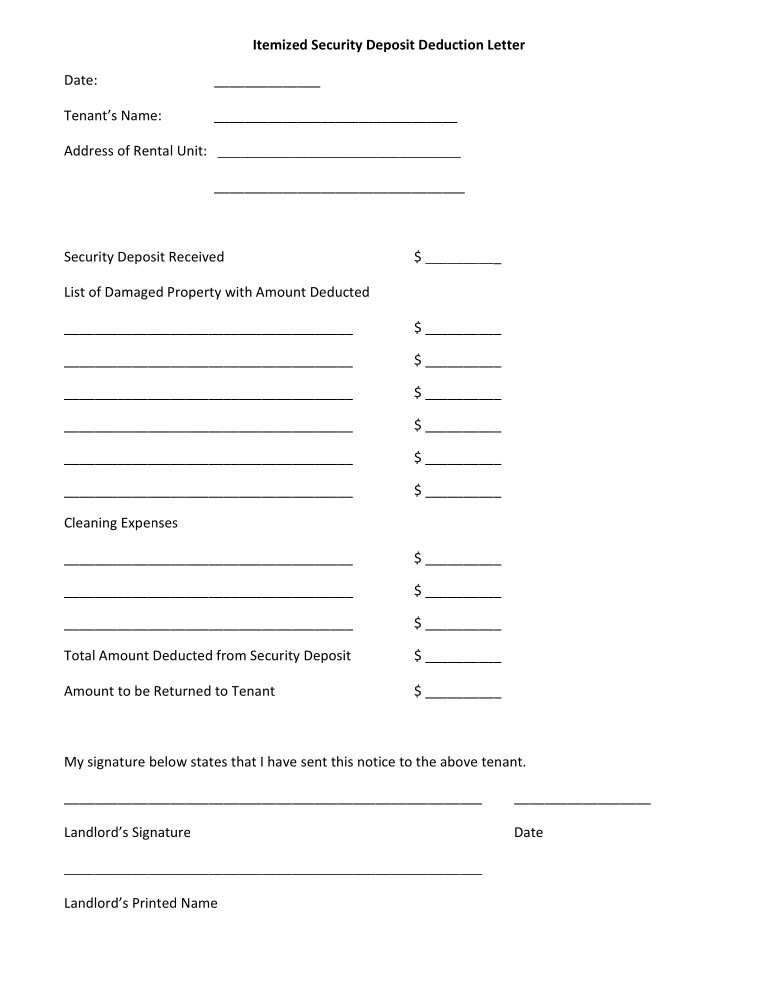
5. Security Deposit Refund Letter Template
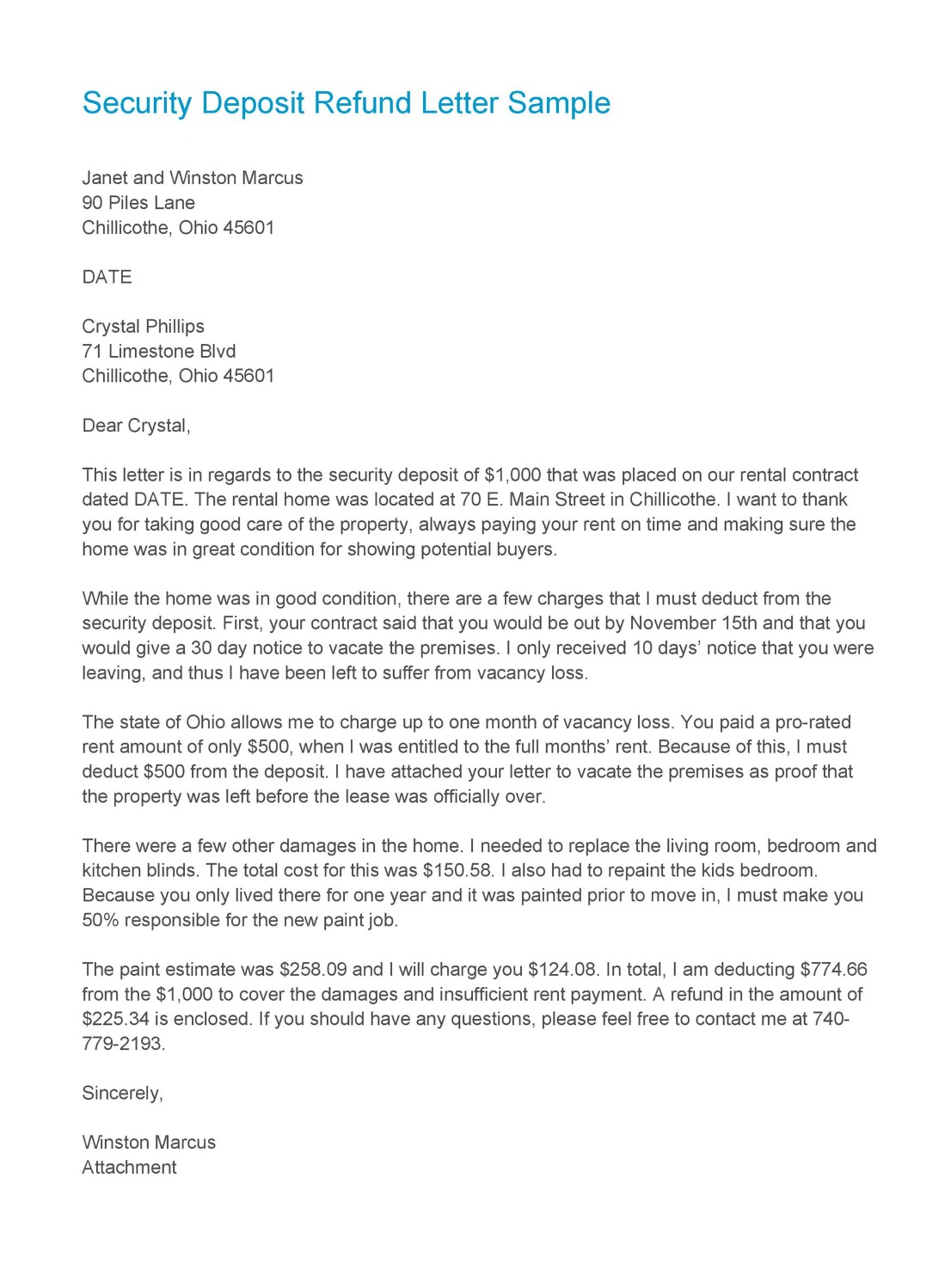
How to Write a Security Deposit Return Letter
Writing a Security Deposit Return Letter is a crucial step in the rental process, ensuring clarity and professionalism in the handling of security deposits. This guide will take you through the necessary steps to craft an effective letter.
Understanding the Purpose:
Firstly, understand that a Security Deposit Return Letter serves as a formal communication from the landlord to the tenant at the end of a rental agreement. It details the status of the tenant’s security deposit and is essential for clear, legal, and professional handling of the end-of-tenancy process.
Start with Basic Information:
Begin the letter with the basics. Include the date, tenant’s full name, rental property address, and the date the tenancy ended. This sets a clear context for the letter.
State the Amount of the Deposit:
Mention the total amount of the security deposit received at the beginning of the tenancy. This transparency is vital for both parties to be on the same page regarding financial matters.
Detail the Inspection Results:
Provide a summary of the property inspection conducted after the tenant vacated the premises. Be specific about the condition of the property and note if it was found in a satisfactory state or if there were issues like damage or required cleaning.
Explain Deductions, If Any:
If deductions are made from the security deposit, itemize these clearly. Include details such as the cost of repairs for damages, unpaid rent, or other expenses. This is crucial for legal compliance and to avoid misunderstandings or disputes.
Specify the Refund Amount:
After listing any deductions, clearly state the final amount to be refunded to the tenant. This shows transparency in your financial dealings.
Include Legal References:
Refer to relevant state laws or clauses in the rental agreement that govern the handling of security deposits. This demonstrates your compliance with legal obligations and adds a layer of trust and professionalism.
Offer Additional Documentation:
If you have receipts or photographs of repairs or damages, mention that these are available upon request. Providing evidence can help in maintaining transparency and can be useful in case of disputes.
End with Contact Information:
Conclude the letter with your contact information. This encourages open communication, allowing the tenant to reach out if they have questions or concerns.
Proofread and Send Promptly:
Finally, proofread the letter for accuracy and clarity. Send it within the time frame stipulated by state law, typically within a few weeks after the tenant vacates the property.
In summary, writing a Security Deposit Return Letter involves clear communication of the details of the deposit, any deductions made, and the refund amount. It should be factually accurate, legally compliant, and sent in a timely manner. This document is not just a formality but a key aspect of maintaining professional and transparent landlord-tenant relationships.
6. Sample Partial Security Deposit Refund Letter
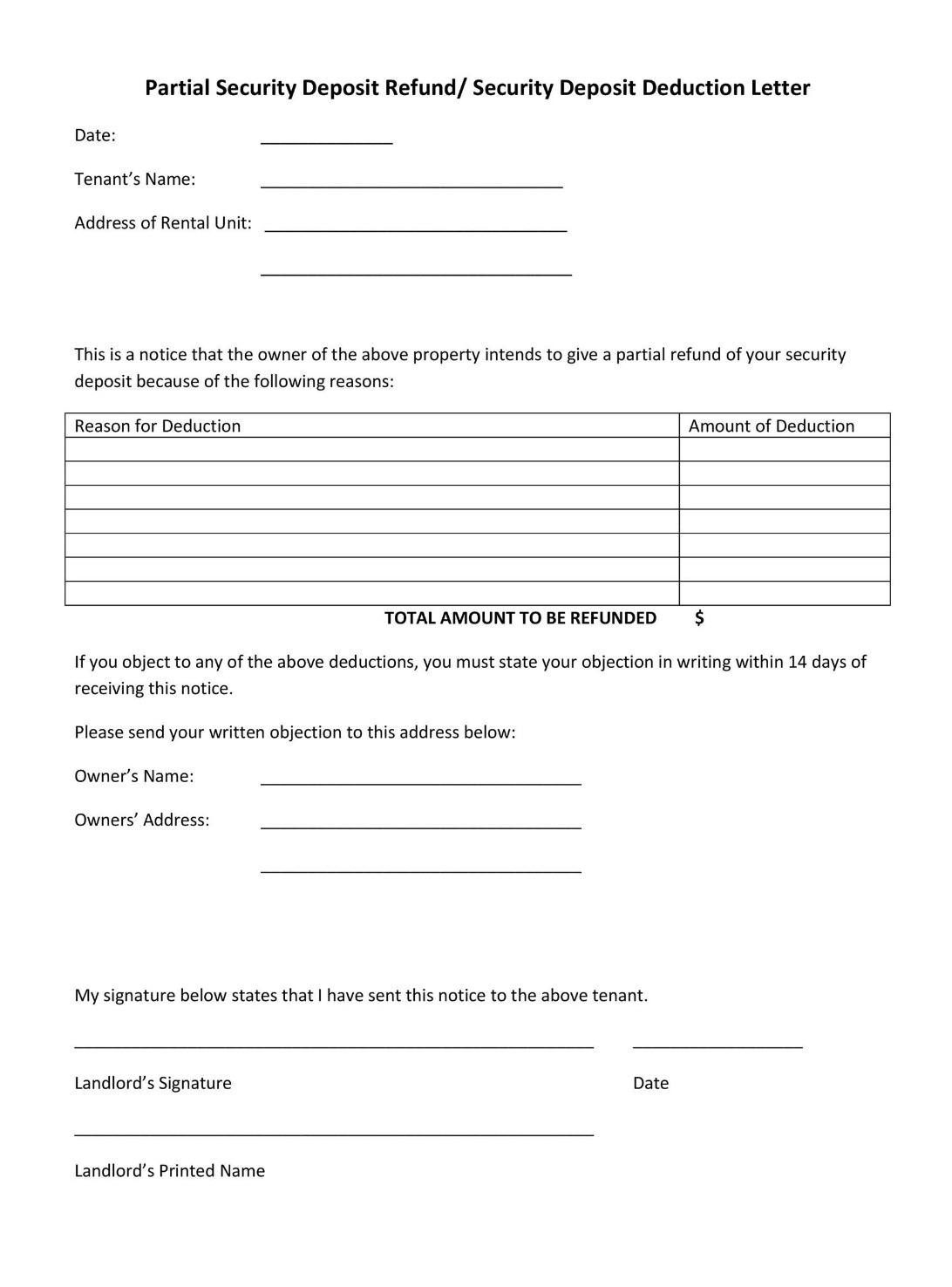
7. Sample Security Deposit Return Form
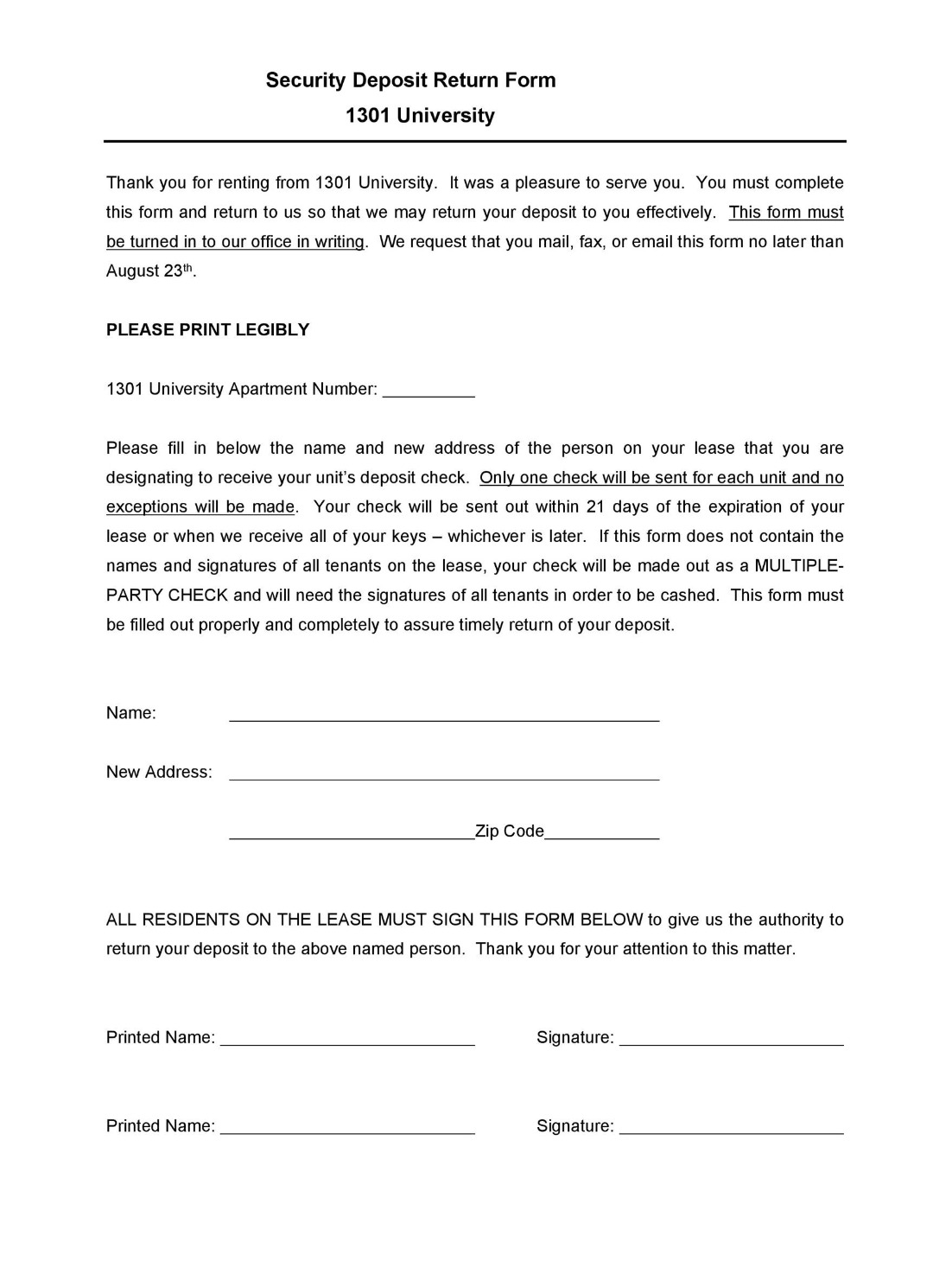
8. Sample Landlord Security Deposit Return Letter
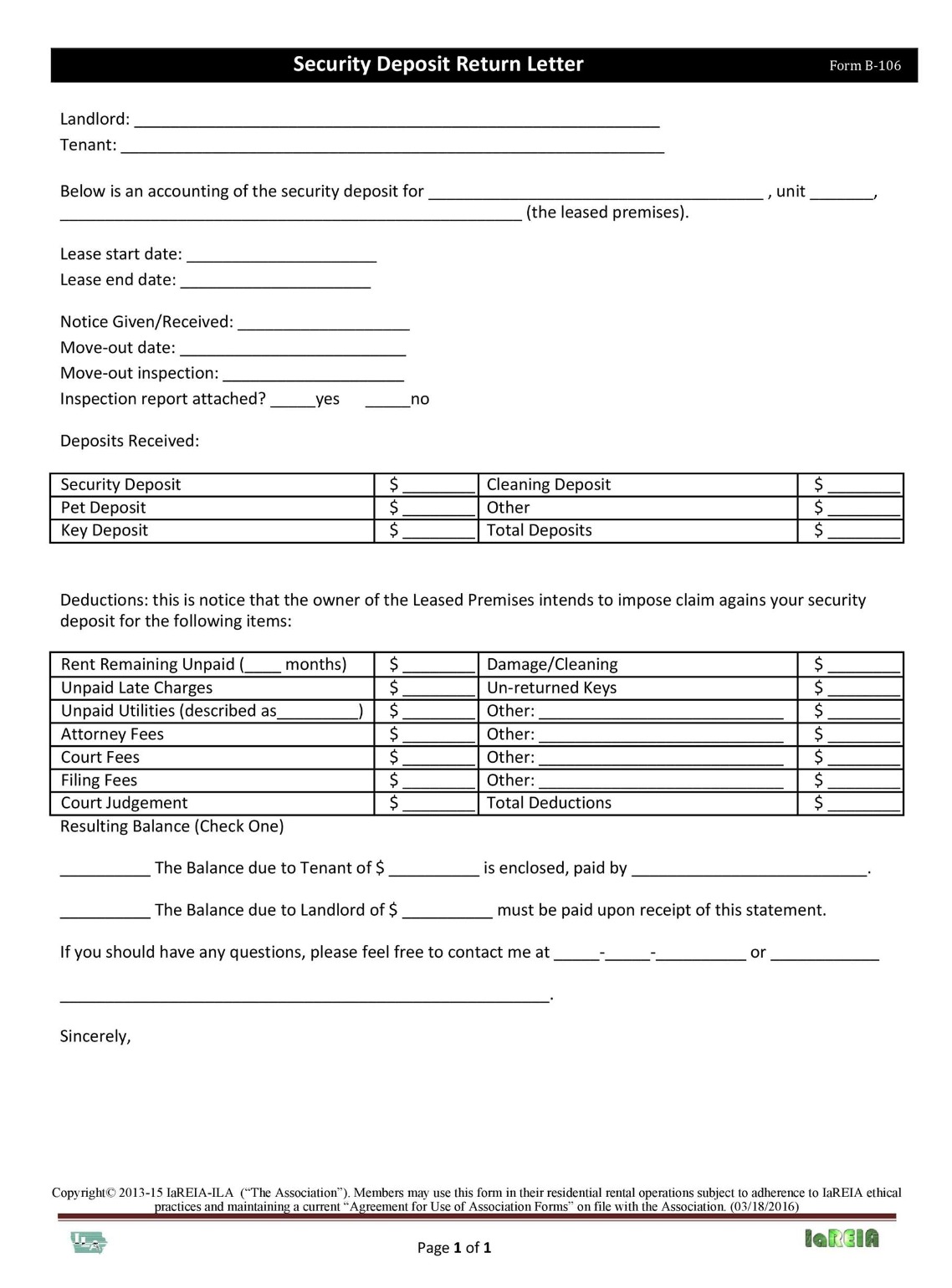
What should you include in a security deposit return letter?
A Security Deposit Return Letter is a vital document in the landlord-tenant relationship, especially at the end of a lease term. Crafting this letter with attention to detail and completeness is essential for clarity, legal compliance, and maintaining a professional relationship. Here’s what should be included in such a letter:
1. Tenant Identification and Property Details:
Start with the tenant’s full name and the address of the rental property. This specific identification eliminates any confusion about whom the letter is addressed to and which property it concerns.
2. Tenancy Dates:
Include the start and end dates of the tenancy. This information frames the timeframe of the rental agreement and is often required for legal and record-keeping purposes.
3. Original Deposit Amount:
Mention the total amount of the security deposit that was received from the tenant at the beginning of the lease. This sets the financial context for the letter.
4. Inspection Summary:
Provide a brief overview of the property inspection conducted after the tenant moved out. Highlight the condition in which the property was left. If it was satisfactory and in the same condition as at the start of the tenancy, note this explicitly.
5. Detailed Deductions (if applicable):
If there are deductions from the deposit, they should be itemized clearly. This can include costs for repairs, cleaning services, unpaid rent, or other charges as per the lease agreement. It’s crucial to be detailed and specific to avoid disputes.
6. Remaining Deposit Amount:
After deducting any costs, state the remaining amount of the deposit that is due to be returned to the tenant. This clarity in financial dealings is crucial for maintaining trust.
7. Legal References:
Cite any relevant state laws or lease agreement clauses that pertain to the handling and return of the security deposit. This shows that you are informed and compliant with legal obligations.
8. Supporting Documentation:
Mention that you can provide receipts, photographs, or other documentation supporting the deductions made, if necessary. This adds a layer of transparency and professionalism to your communication.
9. Refund Details:
Indicate how the refund will be made, whether by check, bank transfer, or other means. Include any relevant details like check number or electronic transfer information.
10. Contact Information:
Conclude with your contact information, encouraging the tenant to get in touch if they have questions or need clarification.
11. Closing Remarks:
End on a positive note, possibly thanking the tenant for their tenancy and wishing them well. This can help end the landlord-tenant relationship on a good note.
12. Signature:
Sign the letter to authenticate it. A physical signature on a paper letter or a digital signature on an electronic one adds a personal touch and confirms the letter’s validity.
In summary, a Security Deposit Return Letter should be comprehensive, transparent, and professional. It should detail the financial transactions related to the security deposit, comply with legal standards, and facilitate clear communication between the landlord and tenant. This approach not only ensures a smooth end-of-lease process but also helps in maintaining positive relations and a good reputation as a landlord.
9. Tenant Security Deposit Return Letter Template
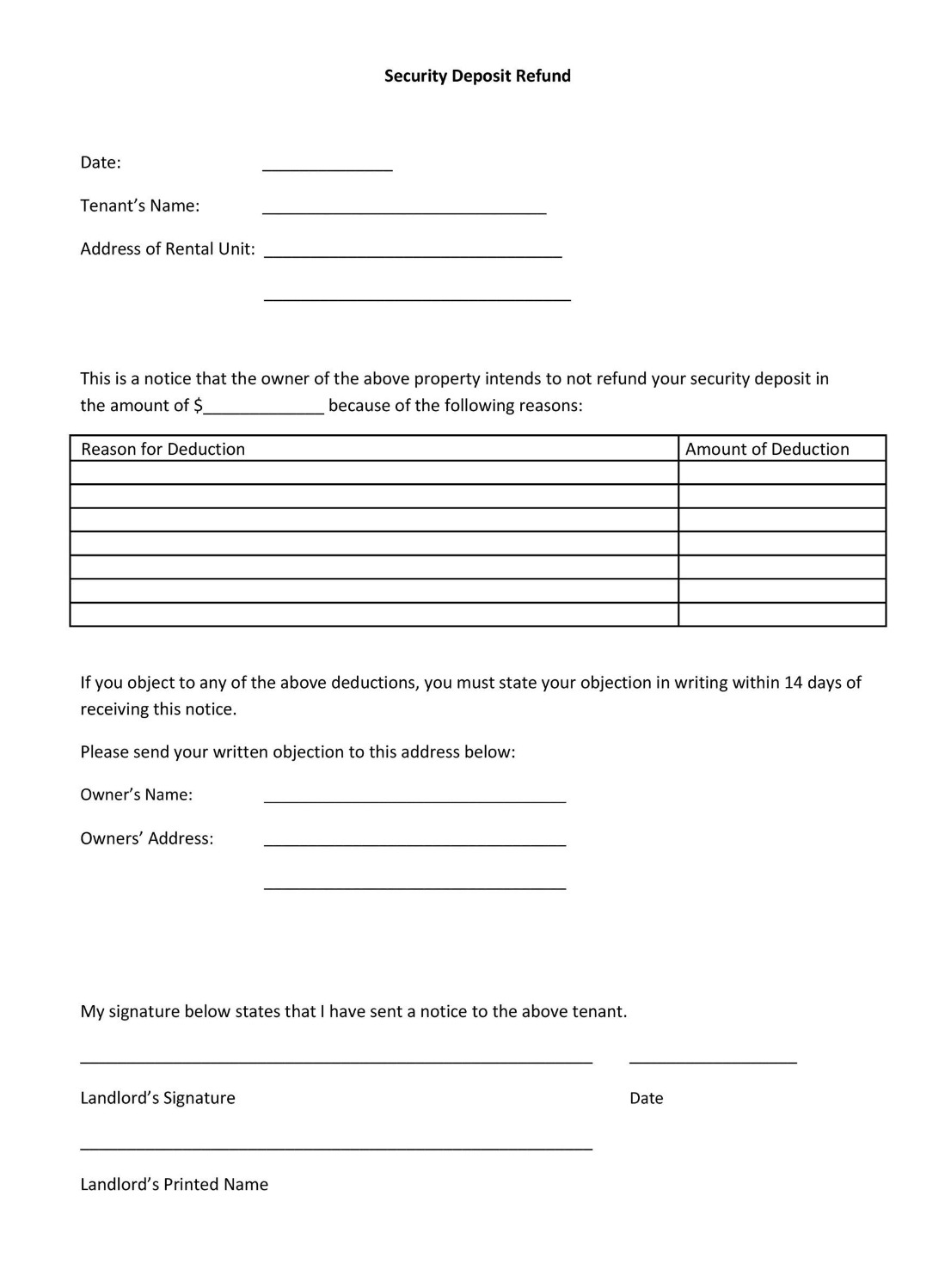
10. Sample Itemized Security Deposit Return Letter
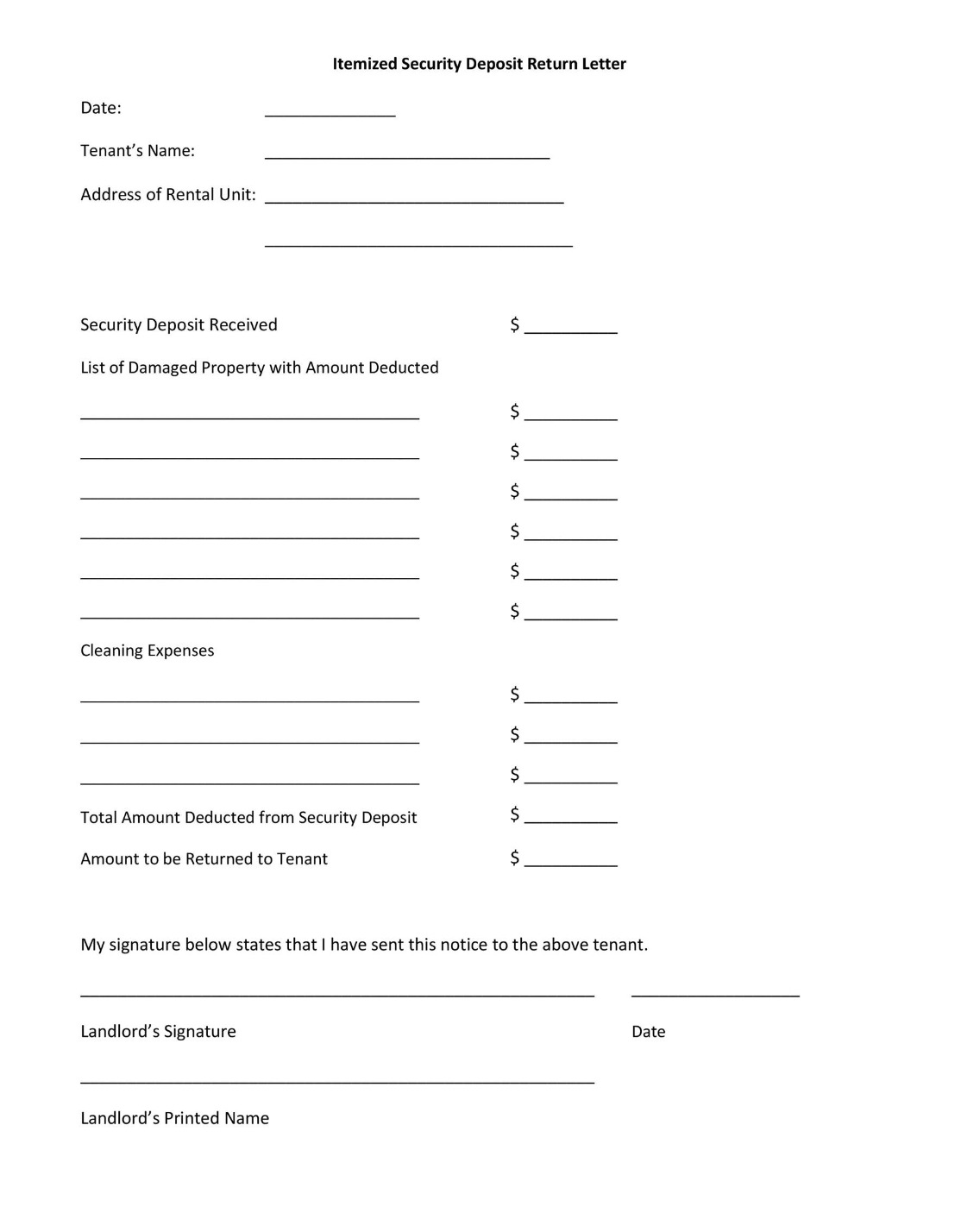
11. Rental Security Deposit Return Letter Template
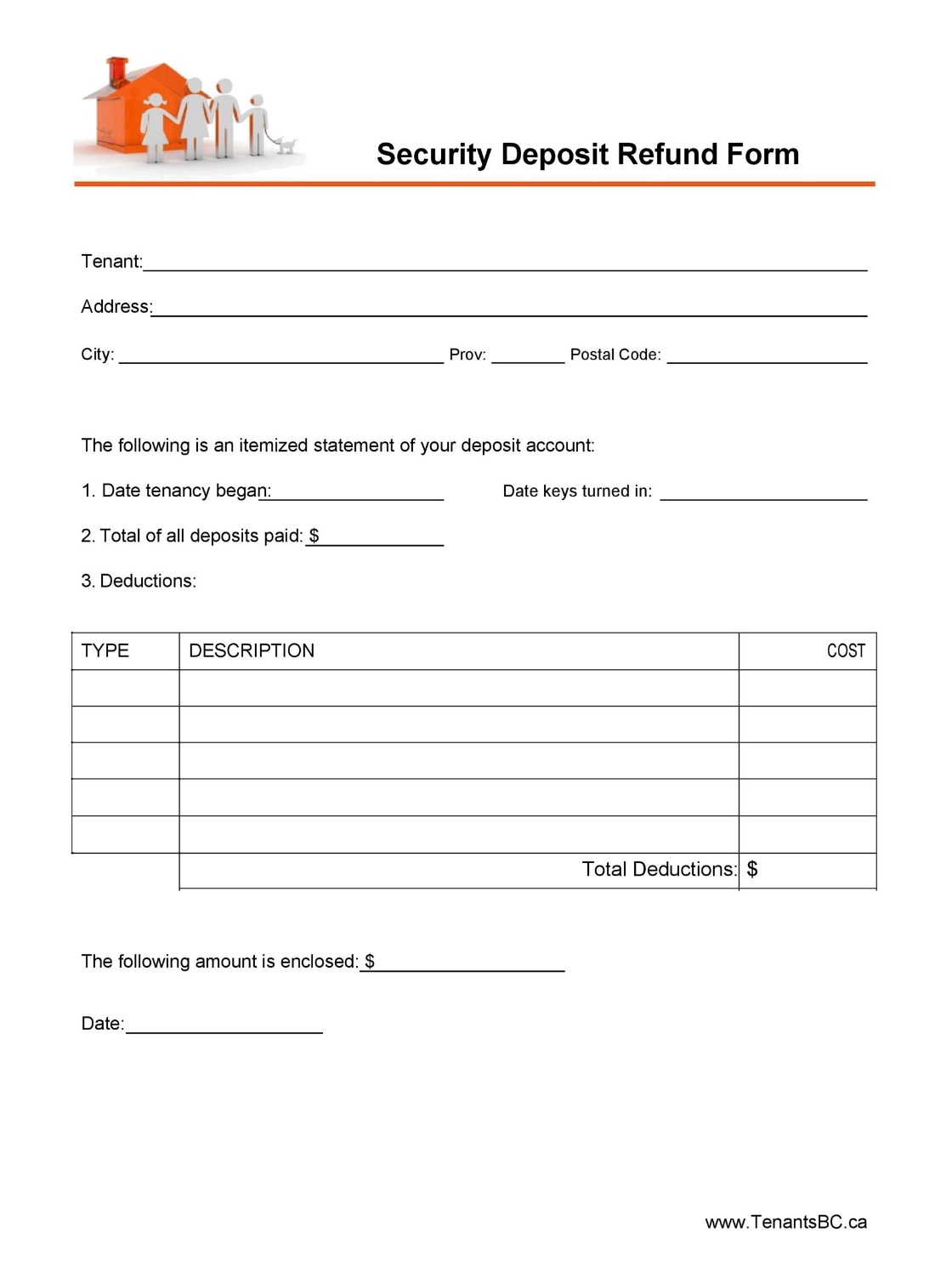
Allowable Deductions From a Security Deposit
When it comes to managing rental properties, understanding what can legally and ethically be deducted from a security deposit is crucial for landlords. Security deposits serve as a financial assurance for landlords against potential damage or non-compliance with lease terms by tenants. However, it’s important to navigate this area carefully to ensure fairness and legal compliance. Here are the allowable deductions from a security deposit:
1. Damage Beyond Normal Wear and Tear:
The most common deduction from a security deposit is for damage to the property that goes beyond normal wear and tear. This can include broken fixtures, holes in walls, significant carpet stains, or damaged appliances. It’s important to differentiate between what constitutes normal wear (like minor scuffs on walls) and actual damage.
2. Cleaning Costs:
If a tenant leaves the property in a less clean state than it was at the beginning of the tenancy, landlords can deduct cleaning costs. This might include deep cleaning of carpets, scrubbing bathrooms, or removing excessive dirt or grime. However, it cannot cover standard cleaning expected between tenancies.
3. Unpaid Rent and Late Fees:
Landlords are typically allowed to deduct any unpaid rent and associated late fees from the security deposit. This is straightforward and is often stipulated in the lease agreement.
4. Unpaid Utilities:
If the tenant is responsible for certain utilities and leaves without paying them, these charges can be deducted from the security deposit. It’s important to have clear documentation of these unpaid bills.
5. Costs of Re-Keying or Changing Locks:
If a tenant fails to return all keys or if there’s a policy to change locks between tenants for security reasons, these costs can be deducted from the security deposit.
6. Property Abandonment Costs:
If a tenant abandons a property leaving behind personal property, landlords can deduct costs associated with removing, storing, or disposing of these items.
7. Breach of Lease Terms:
Costs incurred due to a breach of specific lease terms by the tenant can also be deducted. This might include fees for early termination or penalties for breaking specific rules set out in the lease.
8. Landscaping or Exterior Maintenance:
If the lease specifies that the tenant is responsible for certain landscaping or exterior maintenance and these duties are neglected, the costs to rectify this can be deducted.
It’s essential for landlords to thoroughly document the condition of the property both at the start and end of the tenancy, often through a detailed move-in/move-out checklist with photographs. This documentation can be crucial in case of disputes over deductions.
Landlords must also comply with state and local laws regarding security deposits, including how and when to return them, and what can legally be deducted. Transparency and clear communication with tenants about the reasons for deductions can help maintain a good relationship and avoid legal issues.
In conclusion, while security deposits provide a safety net for landlords, they come with the responsibility of fair and legal handling. Understanding and adhering to the allowable deductions, backed by proper documentation and legal compliance, is key to successful property management.
12. Sample Deposit Return Letter Template
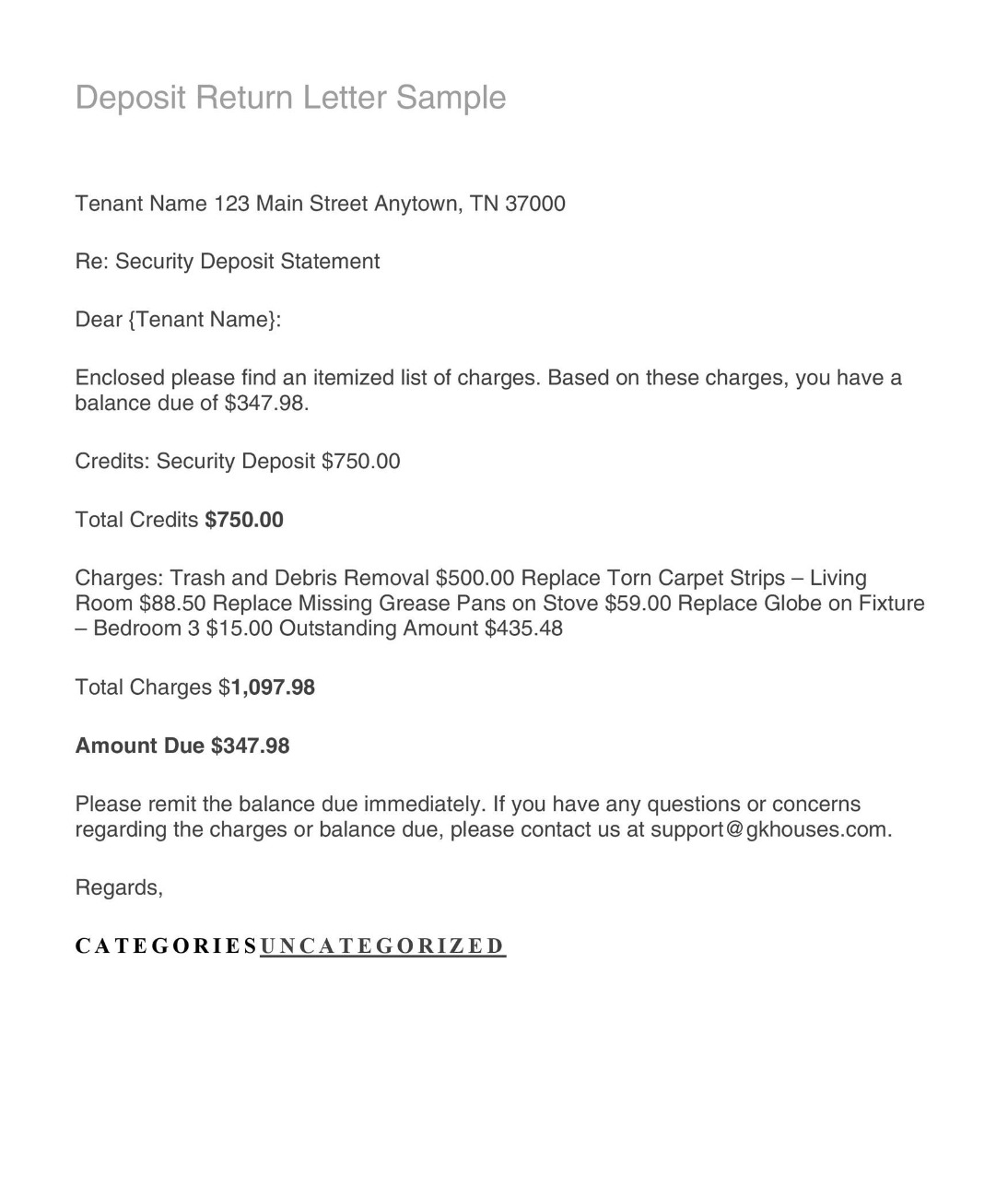
13. Sample Security Deposit Letter for No Damages
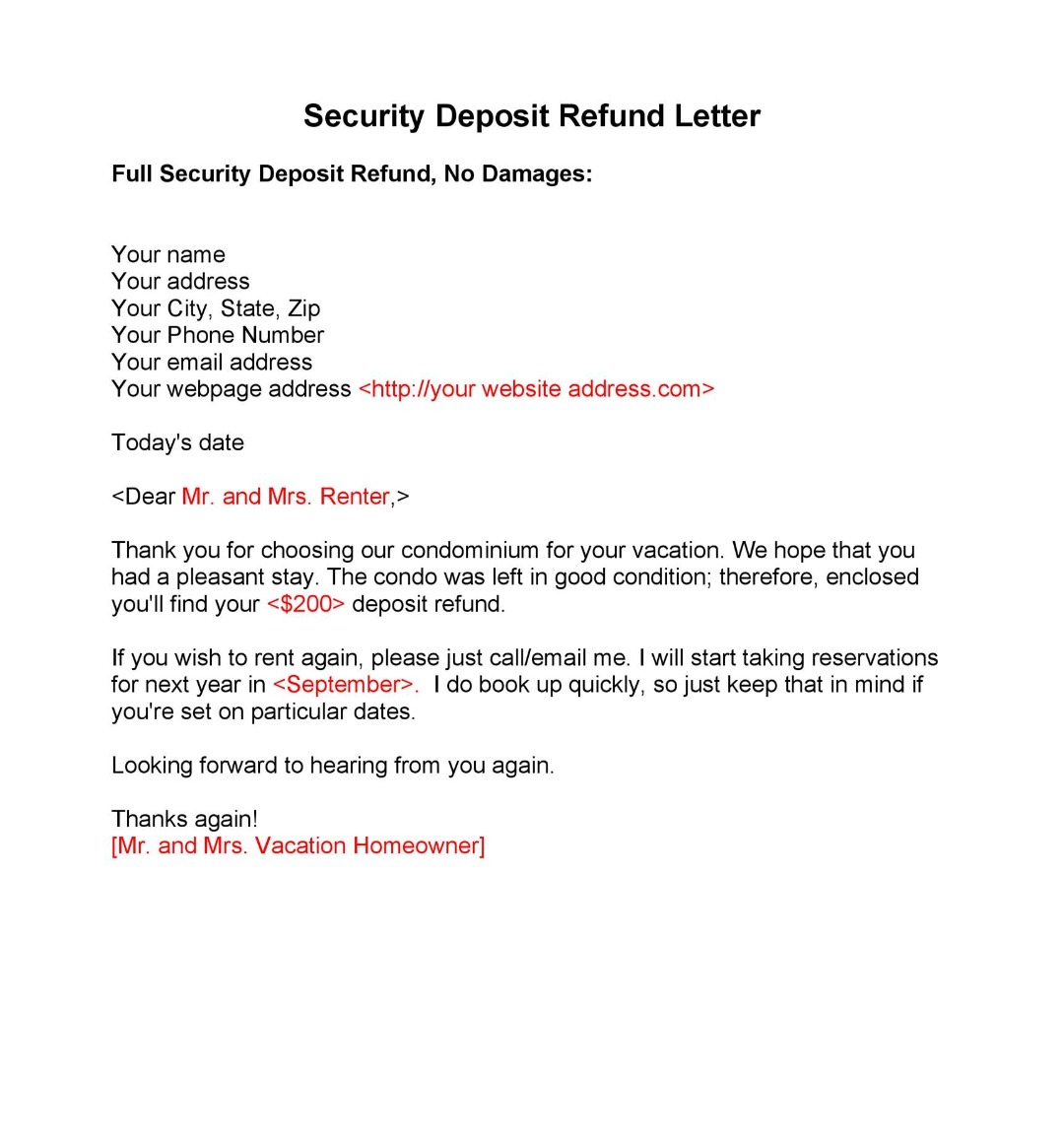
Why do colleges send rejection letters?
Colleges send rejection letters to communicate that an applicant has not been selected for admission. It’s a standard part of the admissions process, providing closure to applicants so they can pursue other educational opportunities.
Can I ask for feedback after receiving a college rejection letter?
While most colleges do not provide specific feedback due to the high volume of applicants, it doesn’t hurt to politely inquire. However, be prepared for a generic response or a policy that does not allow for individual feedback.
Should I respond to a college rejection letter?
Generally, there is no need to respond to a rejection letter unless you intend to inquire about the possibility of being placed on a waitlist or to ask for general feedback.
What should I avoid including in a college rejection letter?
Avoid any language that could be interpreted as personal criticism, overly specific reasons for rejection, or clichés that may diminish the applicant’s efforts.
Can I appeal a college rejection decision?
Some colleges have an appeals process, but it is typically reserved for extenuating circumstances or new significant information that was not considered in the original application. Check the college’s admissions website or contact the admissions office for specific policies.
Related Posts
Letter of Intent Samples & Templates
Letter of Intent for a Job Samples & Templates
Lease Proposal Letter Samples & Templates
Letter of Inquiry Samples & Templates
Character Reference Letter Samples & Templates
Claims Letter Samples & Templates
Response Letter Sample & Templates
Follow Up Letter Samples & Templates
Sample Project Proposal Letter Templates
Donation Letter Samples & Templates
Addressing a Formal Letter Samples & Templates
Grievance Letter Samples & Templates
Sample Sponsor Thank You Letter Templates
Sample Letters of Request
Sample Cover Letter for Teacher
